OSD 24.10.2006: INTELLECTUAL CAPITAL STATEMENTS FOR SMALL AND MEDIUM SIZED ENTERPRISES (SMEs)
The purpose of the roundtable was to begin a discussion exploring the requirements for an Intellectual Capital Statement in a UK context.
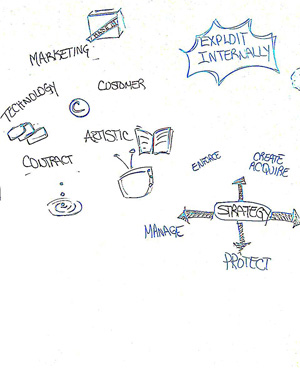
The hypothesis is that Innovation and know-how are the foundations of dynamic and thriving economies. Small to medium enterprises (SMEs) are hotbeds of innovation. The particular forces that shape them require constant improving, changing and improving. The intellectual capital within SMEs is usually difficult to identify, transmitted as forms of embodied and tacit knowledge, but that it is the valuable knowledge that drives competitive advantage.
European countries, such as France, Germany, Spain, Poland, UK, and Slovenia are increasingly recognizing the need to capturing intellectual capital for innovation and progress; however, efforts are usually minimal and bureaucratic. The InCaS project aims to look into intellectual capital for SMEs, without the bureaucracy, and seeks to establish a platform for the development of Intellectual Capital Statements over the next few of years in these countries.
The discussion at the Round Table was kicked off with a presentation by Lara Quelch, from KPMG’s Intellectual Property Service, , of research carried out by the consulting firm KPMG into IP and SMEs. Following this conversation the participants explored what kind of institutions are necessary for interviewing and bringing into the InCaS interviews.
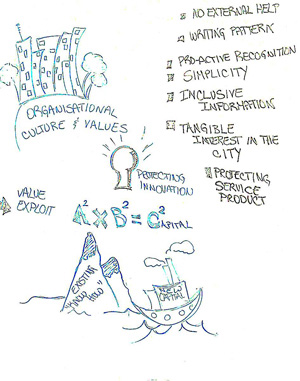
SME’s making Intellectual Capital Statements: The consultants (KPMG’s) View
How can intellectual capital be captured without getting in the way of SME innovation? There is a need for exploring tacit knowledge and the intangible assets within SMEs and how the intangible may become more tangible. If possible, could SMEs go to banks to raise finance based on their Intellectual Capital statement?
Even large enterprises have trouble capturing intellectual capital; therefore, how may small and medium size enterprises do the same? SMEs face many challenges in producing an intellectual capital statement. First and foremost, lies the dilemma of conceptualising what this statement involves. Is it a financial statement? Or, is it an innovative advertisement about the company, set forth in leaflets?
KPMG categorises intangible assets along a continuum from “hard“ tangible marketing-related, customer-related, artistic-related, contract-based, technology-based assets towards more “soft” intangibles as you move towards assets such as customer-supplier relationships and trade. Tangibles can be protected by law (i.e. patents, registered trademarks), which is what usually impresseses City businesses.
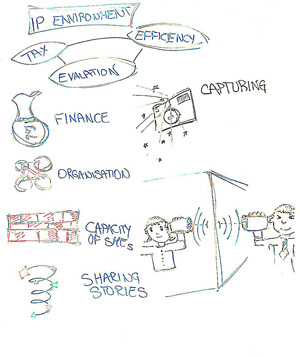
Based on a KPMG’s survey, innovation most often arises out of SMEs, but how it is really thought of is quite vague. So, how can an intellectual capital statement for innovation be approached in an effort to to manage and maintain IP? KPMG believes that the strategy should involve infiltration into different areas of the business, which involves enforcing, creating, acquiring, valuing, exploiting, protecting, and managing IP.
The SME must look into ownership issues. Who are the intellectual capital creators? There may be R&D issues and discrepancies. Once you set the parameters on how to capture the intellectual capital, you need to value it. Are you exploiting it? It’s important to exploit it, not just externally, but also internally, by sharing knowledge across the organisation to work together and not repeat the same research that has already been done.
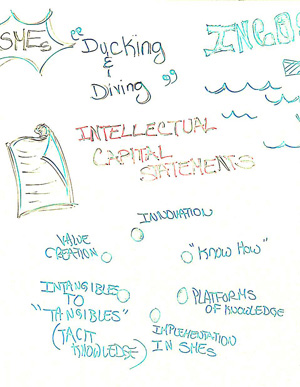
Moreover, when hiring people, clearly highlight to new hires that their intellectual capital is valued and prized by the organisation. Try to avoid situations where employees try to hide and protect their own intellectual capital (i.e. China- There is a need to create a culture of awareness). Therefore, SMEs need to value intellectual capital as well as the processes that SMEs use, which are a value in themselves.
KPMG & Microsoft sponsored research on Innovation in SMEs- August 2006 found that innovation is hard to protect. Different forms of protection include: registered design, trademarks, patents, confidentiality agreements and copyright. The most significant form of protection across UK, Netherlands, Germany and Spain was the use of confidentiality agreements. In Germany, however, the use of patents was more popular than in any other country.
Nevertheless, the dilemma still remains as to what needs to be included in an InCas? Is it a numerical figure on a statement to partners or customers? What could ultimately be included in such a statemnent that is both valuable on a tangible and intangible level of knowledge? (i.e. Patents have been captured, and although these are more tangible forms of evidence for City companies, perhaps we need to move forward into a new form of intellectual capital with regards to the intangibles of innovation.)
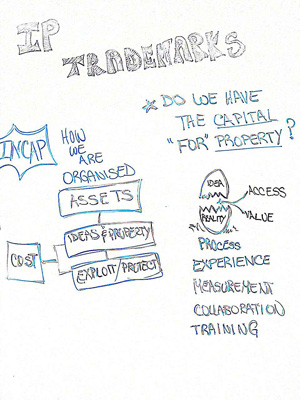
Questions raised by participants
What is IP compared to Intellectual Capital?
IP:
inventions, protected by patents, copyright (i.e. song lyrics etc.)
brands, logos, registered trademarks and designs (i.e. Coke bottle)
Confidential information/ trade secrets
Perhaps more of the legally protected “box”
Intellectual Capital:
when the organisation is organized, processes are controlled within the organisation, what is in the employees’ heads, what people learn from working day to day, the “know-how”
Intellectual Assets
Can be your best practices, as well as “know-how”
But…Is there consensus on these definitions?
Intellectual capital involves an “idea,” so how can one protect it? Using confidentiality agreements? If it is in people’s minds, it is very difficult to exploit it. Therefore, how can one retian this knowledge withing their minds and enable it to be extract at the same time? If you can exploit it, you will do well, especially if you do it before someone else does. Nonetheless, keeping things a secret is very difficult.
i.e. Like other vacuum manufacturers in the market, Dyson had to change its strategy to adapt to the market.
Do we have the intellectual capital, such that we can exploit the intellectual property? Perhaps as long as the employees work for you, you have the intellectual capital working for you, but you don’t necessarily have the intellectual property working for you. The Intellectual capital is when a company could have value, if they knew how to exploit it. Herein lies the problems when consultants come in to a company and try to describe all the things they perceive as intellectual capital. So, they have to show how they could generate value from this. Consultants and internal employees may have different views on what are the intellectual capital opportunities for property exploitation.
Importance of intellectual capital is that it can vanish very easily. Imagine a company goes bankrupt, there goes the intellectual capital. Therefore, InCaS focus is to determine ways to avoid such loss, and to increase the value of SME sectors, so as to “make themselves better,” and increase opportunities for third party investment.
In some companies, everything you do is intellectual capital, therefore we need to sketch out what isn’t intellectual capital.
Intellectual capital doesn’t have value until you learn the means of exploiting it. Once sharing it, it begins to have value, and feeds back to build more intellectual capital, yet perhaps more intangibility. Learning as you go along makes things more tangible but perhaps more intangible at the same time.
It is so important for people to document their ideas and write them down, so that when they leave someone else can benefit. However, are people that unselfish? Perhaps not!
Also, it is not enough to have all the tangibles, you also need the intangibles that are embodied in the employees, their experiences, their thoughts, their ideas. These are what fuels innovation and further advancement in an area of expertise.
Further Work
The group agreed that an Intellectual Capital Statement is a good idea in principle however a number of key definitions need to be agreed, the implementation must not be onerous, a means of documenting tacit knowledge was important.
It was also agreed that further interviews need to be conducted with national accounting boards and other regulation and standardisation bodies, as well as banks and credit
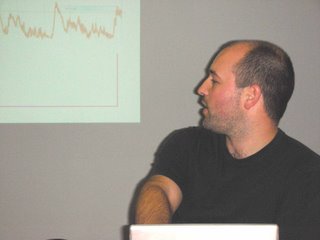
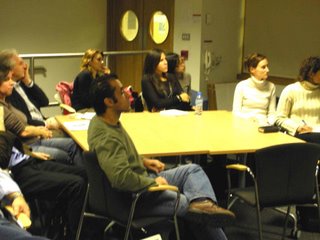
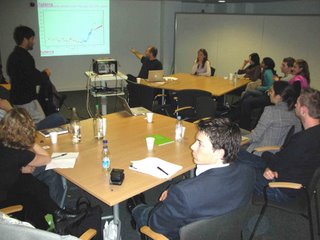
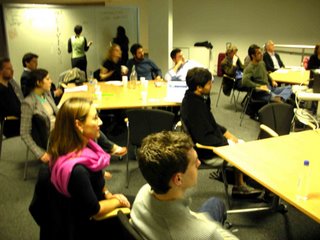




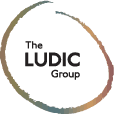
 subscribe to our feed
subscribe to our feed